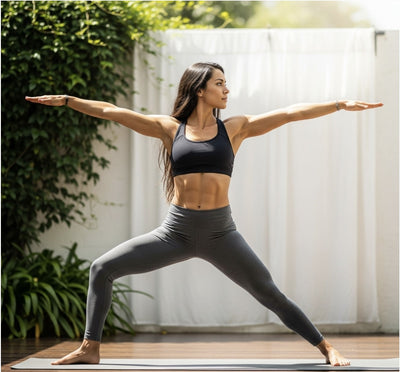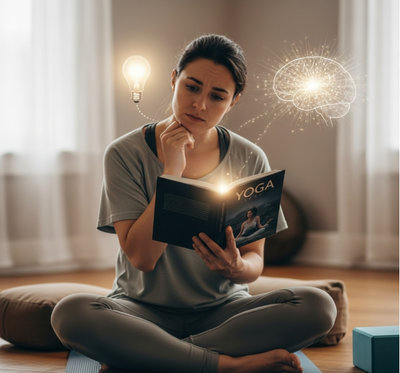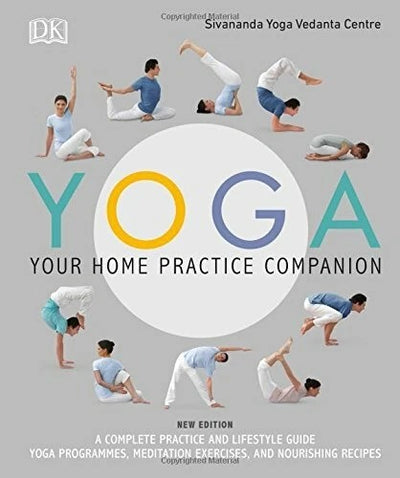
Yin vs. Restorative Yoga: When to Choose Which - 5To9Style
Share
Yin vs. Restorative Yoga: When to Choose Which
Unwinding Your Way: Yin vs. Restorative Yoga – When to Choose Which
In the realm of slow, introspective yoga styles, Yin Yoga and Restorative Yoga are often mentioned in the same breath due to their shared emphasis on long holds and an unhurried pace. However, despite their apparent similarities, these practices have distinct intentions, methodologies, and target tissues. Understanding the key differences between Yin vs. Restorative Yoga is essential for choosing the most beneficial practice for your current physical and emotional needs.
Both offer profound benefits for stress reduction and well-being, but they achieve these through different means. Knowing when to choose which can significantly enhance your yoga practice and overall health.
The Core Difference: Intention
The most crucial distinction between Yin and Restorative Yoga lies in their primary intention and what they aim to release or strengthen.
-
Yin Yoga: Targeting Connective Tissues for Flexibility and Energy Flow
- Goal: To stretch and rehydrate the deeper connective tissues (fascia, ligaments, tendons, and joint capsules) to increase joint mobility and stimulate the body's subtle energy lines (meridians or nadis).
- How it Works: Poses are held passively for extended periods (typically 3-5 minutes, sometimes longer), often with a mild-to-moderate sensation of stretch or compression in the target area. Muscular engagement is minimized to allow the stretch to penetrate deeply.
- Feeling: You're often encouraged to find your "edge" – a gentle, tolerable discomfort – and breathe through it, cultivating patience and mindfulness.
- Best for: Increasing joint flexibility, releasing deep-seated tension, complementing active (Yang) exercise, and balancing the body's energetic system.

-
Restorative Yoga: Activating Deep Relaxation and Nervous System Reset
- Goal: To achieve profound deep relaxation, soothe the nervous system, and facilitate healing by completely supporting the body in comfortable, passive postures.
- How it Works: Abundant yoga props (bolsters, blankets, blocks, straps, eye pillows) are used to ensure the body is 100% supported, allowing for complete muscular release and effortlessness. Poses are typically held for very long durations (5-20 minutes or more).
- Feeling: The pose should feel entirely comfortable, effortless, and deeply restful. If there's any strain, more props are added.
- Best for: Alleviating stress, reducing anxiety, combating insomnia, aiding recovery from illness or injury, and offering a sanctuary for profound rest.

When to Choose Which: Tailoring Your Practice
Knowing the distinct aims of each style helps you choose wisely:
-
Choose Yin Yoga when:
- You feel stiff in your joints (hips, spine, hamstrings, shoulders) and want to increase their range of motion.
- You engage in active sports or dynamic yoga styles (like Vinyasa or Ashtanga) and need to balance muscular work with connective tissue release.
- You want to explore mindfulness by sitting with subtle physical sensations.
- You're interested in stimulating your body's energetic pathways (meridians).
- You want a challenging practice that cultivates patience and stillness.
-
Choose Restorative Yoga when:
- You are experiencing high levels of stress or anxiety.
- You suffer from insomnia or have trouble sleeping.
- You are feeling fatigued, depleted, or burnt out.
- You are recovering from illness, injury, or childbirth (always consult a healthcare provider first).
- You need to deeply calm your nervous system and activate the "rest and digest" response.
- You desire a practice of profound relaxation and self-nurturing.

Many practitioners find immense benefit in incorporating both Yin and Restorative Yoga into their routine. For instance, a Yin class after a strenuous workout can aid recovery, while a Restorative session before bed can promote deep sleep. Both styles complement more active pursuits, helping to create a truly balanced and holistic approach to well-being. Ensuring you have the right yoga equipment, from a supportive yoga mat to a variety of yoga props, will enhance your experience in either practice.
Find Your Perfect Balance
Ready to understand Yin vs. Restorative Yoga and choose the ideal practice for your current needs? Whether you seek deep flexibility or profound relaxation, both paths offer powerful benefits for your body and mind. For a wide selection of high-quality yoga mats, versatile yoga props like bolsters, blankets, and blocks, and comfortable yoga wear designed for ultimate comfort and freedom in movement, explore our full collection at https://5to9style.com/collections/all.
Begin your journey to a more balanced and harmonious self today. Visit our homepage for more insights and to discover products that align with your mindful lifestyle: https://5to9style.com.








